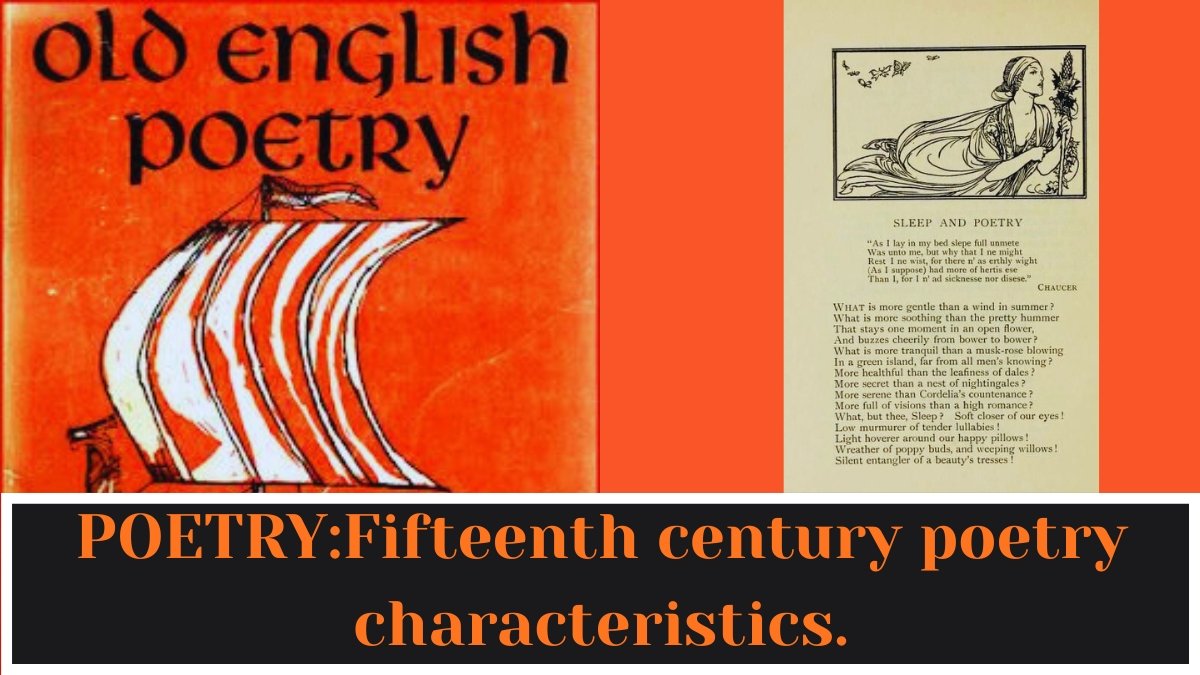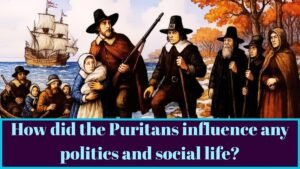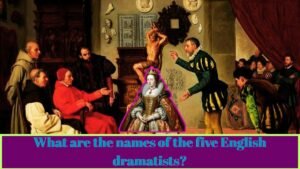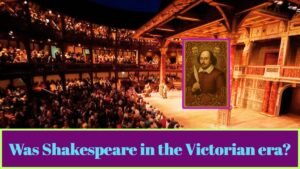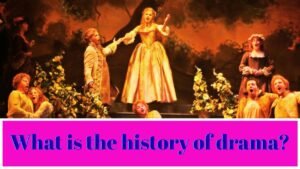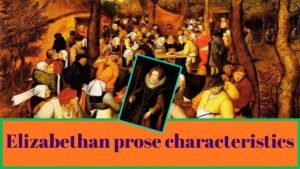POETRY:Fifteenth century poetry characteristics.
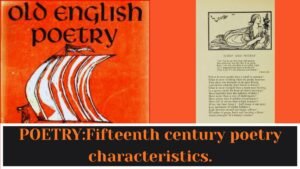
Fifteenth Century a barren period, specially in poetry-Possible causes of this-The English Chaucerians: Hoccleve and Lydgate-Skelton-Scottish Language: Old Scots and Middle Scots-Scottish literature: Barbour, Blind Harry-The Scottish Chaucerians: James 1, Henryson, Dunbar, Douglas-Ballads.
The period of 150 years after Chaucer’s death is comparatively a blank, specially in poetry. In other departments the period was less unproductive. In prose it produced one great eat book-Malory’s Morte d’Arthur, it witnessed the establishment of the drama, and it was in this period that the old beautiful English folk songs or ballads were written.
Fifteenth century poetry characteristics.
Several explanations have been given to account for the dearth of good poetry in the fifteenth century. It is said that conditions were unfavourable to poetry and the arts. The Wars of the Roses had killed off the flower of English nobility and there were no patrons. This reason is not very convincing, for we know that the finest work of the fourteenth century that of Chaucer, Langland and Gower-was produced during the troubled reign of Richard II. It is true that peace and prosperity are conducive to the growth of the arts, but it is equally true that real genius has a way of breaking out even in the most unpropitious circumstances. Another theory blames the absence of first rate poetry in the fifteenth century on the transitional state of the English language. Great changes in grammar and pronunciation were taking place, changes which led over the centuries to modern English. The final ‘e’ which was an integral part of many words in Chaucer, and being fully pronounced counted as a syllable, was dropped in the fifteenth century. The result was that the music of Chaucer’s verse was not apprecia-ted. Possibly his decasyllabic lines were read as octosyllabic, and additional and therefore inconvenient syllable being slurred over hastily. However that may be, his followers imitated him without understanding the technique of his versification. He was regarded as irregular and crude. This misunderstanding led to their taking whatever licence they pleased with their own versification; the verses of his immediate followers, Hoccleve and Lydgate, are little more than doggrel. Chaucer continued to be misunderstood, at least in theory, for nearly four hundred years, and it was only in 1775 that Thomas Tyrwhitt hit upon his secret. In actual practice, however, the secret of Chaucer’s rhythm was restored to English verse in the middle of the sixteenth century by Wyatt and Surrey who sought inspiration from Italy as Chaucer before them had sought it from France. This explanation is sounder and more in accord with facts. But perhaps the simplest explanation is that no great poet was born in England during the fifteenth century. The wind of genius bloweth when and where it listeth.
ENGLISH POETRY IN THE 15TH CENTURY
English Chaucerians
Of the English poets of the post-Chaucerian period, only three deserve notice: Hoccleve, Lydgate gate and Skelton. Though Hoccleve and Lydgate professed to be disciples of Chaucer, both are hope-lessly dull. Hoccleve is remembered because the only portrait we have of Chaucer is by him. Lydgate is remembered for the two lines which have become a popular quotation:
Be the day weary, be the day long, At length it draweth to evensong. (modernised)
The third, John Skelton, cannot be so summarily dismissed, if only because of the interest shown in him by modern poets. If eccentricity is orginality, Skelton was certainly original, owing little or nothing to Chaucer or anybody else. His own description of his verse is revealing:
Though my rime be ragged, Tatter’d and jagged, Rudely raine beaten, Rusty and moth-eaten; If ye take wel therewith It hath in it some pith.
Because of his ‘ragged’ and ‘jagged’ verses Pope called him ‘beastly Skelton’, and yet it is the roughness of his doggrel-like verses (called Skeltonics) matched by the roughness of his temper that seems to have attracted the moderns. His strong point is satire of the personal kind, coarse and abusive. The most interest-ing of his satires are Colin Clout and Why come ye not to Court?
In the first he lashes out at the clergy, in the second at Cardinal Wolsey, the Chief Minister of Henry VIII. Though his characteris-tic vein was satirical his range was wide and he was capable of tenderness and pathos, as in his Book of Philip Sparrow, a girl’s lament over the death of her pet sparrow.
Skelton was tutor to the future King Henry VIII, a rector and a learned classical scholar, but he preferred clowning in his poems. He is hard to classify. All that can be said about him is that his poetry reflects the spirit of the dying Middle ages rather than that of the Renaissance.
Scottish Poetry. It is with pleasure that the student turns from
the dullness of the English poetry of the 15th century to the poetry of Scotland. It would be well, however, first to take a bird’s eye view of the Scottish literature generally. The attempts of the English kings Edward I and Edward II to subdue Scotland at the end of the 13th and in the beginning of the 14th centuries united the warring Scottish clans into a nation. The national feeling thus born led, under the early Stuart Kings in the fifteenth century, to the growth of a vigorous national culture. Broadly speaking two languages were spoken in Scotland: Scots spoken in the Highlands and Gaelic in the Western and Northern Scotland. We are not concerned with the Scottish Gaelic, which like the Welsh or Irish Gaelic belongs to the Celtic world. The Scots with which alone we are concerned had two phases-old Scots and Middle Scots. Old Scots was hardly distinguishable from English spoken in Northern England. It was merely a form of English used in Scot-land. By the 15th century old Scots had developed into what we call Middle Scots. This is a sort of hybrid or made-up language used for literary purpose only, for it at no time corresponded to the spoken Scottish language. This language continued to be written until the union of the two crowns in 1603 killed it as the Norman conquest had killed the Anglo-Saxon. After 1603 the Scottish writers wrote in English and a native Scottish literature virtually came to attend, though an attempt to revive it was made by some writers, notably Robert Burns in the 18th century by using the vocabulary of spoken Scots.
Though English poets failed to understand him, the Scottish poets proved apt pupils of Chaucer. His example and influence produced a succession of poets who make the 15th century the most glorious period of Scottish poetry. In range, maturity, and artistry, this truly national poetry has never after been surpassed.
Scottish poetry may be said to begin with John Barbour, an older contemporary of Chaucer. His Bruce, a spirited poem in octosyll-abics, celebrates the adventures of Robert Bruce, the hero of the Scottish War of Independence. His lines on freedom have become famous.
A! fredome is a noble thing! Fredome mays man to have liking;
Fredome all solace to man gives. He lives at ease that freely lives.
(modernised)
The minstrel Henry or Blind Harry who flourished in the latter part of the 15th century was a worthy successor to Barbour. His Wallace a long and violently patriotic poem em in decasyllabic couplets recounts the brave exploits of the earlier national hero. Neither of these poems is strictly historical, but Wallace is almost fabulous in its exaggerations, though because of its patriotic and anti-English appeal it has had enormous vogue among the Scots. The poems are not very musical either; in fact their principal recommendation is their simplicity and patriotic vigour.
SCOTTISH CHAUCERIANS
The poets who were really influenced by Chaucer and who on that account are called Scottish Chaucerians are King James I, Henryson, Dunbar and Gawain Douglas.
James I (1396-1436) the first in point of time wrote the King’s Quair (King’s Book) in the seven lined stanza of Chaucer, which has since come to be called the rhyme-royal. While still a boy he was captured by the English and remained a prisoner in England for 19 yea years. He fell in love with Lady Jane Beaufort, Henry IV’s niece, whom he married. The King’s Quair which gives a touching and graceful account of this love affair shows marked influence of Chaucer. The description of the King’s falling in love at the first sight is reminiscent of the episode in the Knight’s tale where the two captive Knights see Emily in the garden through the prison window. The royal author acknowledges his debt to Gower and Chaucer his ‘masters dear’ and shows himself a correct and accom-plished versifier.
Robert Henryson who comes after James but whose dates are uncertain was a school-master. He is a much greater poet than James; he is indeed the first major poet of Scotland. He is indep-endent and original even in his imitation of Chaucer and has great power and remarkable variety. His works consist of two serious poems of some length, the Testament of Cresside and Orpheus and Eurydice, a collection of Fables from Aesop, and about a dozen other minor poems the chief of which is the pastoral ballad, Robene and Makyne which was included in Percy’s Reliques. The Orpheus and Eurydice is a poem of average quality which tells the classical legends of the musician Orpheus going to Hades to bring back his wife Euryd Eurydice. The Testament of Cresside is Henrysons’ greatest poem in the serious kind. It is a sequel to Chaucer’s Troilus written in the same rhyme-royal stanza. His moral sense was shocked at the idea of the faithful Troilus killed and the faithless Cresside living happily. So he gave the story an ending which he thought was more natural and probable. First, Troilus is not dead. Second, Diomede tires of Cressida and deserts her as she has deserted Troilus. She thereupon takes to the streets and becomes a common prostitute. Her horrible punishment comes when she is afflicted with leprosy. So, equipped with a begging bowl and clappers she joins the band of lepers. One day Troilus passes her way and gives her alms, their eyes met, but neither recognised the other. Later when Cresside is told who he was, she faints and dies. Before dying, however, she makes the testament by which she leaves her body to the worms, her begging bowl and clapper to the lepers, and her ring to Troilus. On receiving the ring which he recognises as his own and coming to know of her story Troilus grieves and raises a marble monument over her grave. The story is told with great tragic power, and though the punishment Henryson gives to Cresside is terrible, it is interpenetrated with tenderness and pathos. Mark the skill with which the lovers’ meeting by the wayside is described.
Than upon him scho kest up baith hir Ene (eyes), And with ane blenk (look) it come into his thocht That he sumtime hir face befoir had sene. But scho was in sic plye (plight) he knew hir nocht. Yit than hir luik into his mynd it brocht The sweit visage and amorous blenking Of fair Cresseid sumtyme his awin darling.
The Fables show the poet in a lighter mood and are characterised by lively touches of humour and realism. Henryson is the most characteristically Scottish of all the group in his humour as well as in his realistic description of nature which are true to the Scottish soil and not merely conventional.
Robene and Makyne is the most popular of Henryson’s poems and is second only to the Testament. It is a pastoral ballad in which at first the usual order of man pursuing woman is reversed. Makyne, the shepherdess, woos Robin, the shepherd, but in vain. Soon, however, the tables are turned and Robin solicits her love. It is now her turn to reject the suit. She retaliates by reminding him of the old proverb-
The man that will nocht when he may Shall hauf nocht when he wald;
and goes home merrily and heart-whole-a classic example of tit for tat in love. It is a delightful idyll.
William Dunbar (1460-1530) ranks first in this group and has generally been acclaimed as the greatest poet of Scotland second only to Burns. Afte After taking his M.A. degree from the University of St. Andrews he became a Fransiscan friar, but was later unfrocked. He was attached to the Court of King James IV who employed him on several diplomatic missions including one to England to negotiate the King’s marriage to Margaret Tudor, daughter of Henry VII. He was a court poet and a sort of laureate of Scotland. He was prolific as a poet and about a hundred poems of his are extant. They are most of them short but brilliant, display-ing an astonishing diversity of subject and matter. The more note-worthy are the Thistle and the Rose, the Golden Targe, the Two Married Women and a Widow, the Friars of Berwick. the Flyting of Dunbar and Kennedy, the Dance of Seven Deadly Sins and the Lament for the Makers.
The Thistle and the Rose is an allegory in rhyme-royal celebrating the marriage of James (the Thistle) with Margaret (the Rose). The Golden Targe in nine-lined stanzas is an allegory of love. The poet in a dream visits the court of Venus where he is wounded by the arrows of Beauty in spite of Reason’s defending him with a golden targe or shield. Neither of these allegories is consistent. They are rather playful exercises of the poet’s rhetoric. The language is heavily ornamented, almost oriental in its splendour, and the swing of metre charms the ears.
The Two Married Women and a Widow inspired by the wife of Bath’s tale is a scalding satire on women. The remarks of these three women on their husbands and on matrimony would make even the wife of Bath blush. The Friars of Berwick, also reminiscent of Chaucer, is a scandalous tale of intrigue involving a high rank-ing friar and a farmer’s wife. In the Flyting Dunbar and Kennedy (a contemporary poet) hurl abuses at each other. Such flytings or scolding matches were common among literary Scots upto the 18th century. The Dance of the Seven Deadly Sins in twelve-line stanzas of spirited verse describes a procession of the sins personified before Satan (called Mahoun or Mohammed) in hell. It is a stinging satire on wickedness, but in a comic tone without any aim at reform or edification. It is much better known than any of the poems re-ferred to above. But the best of Dunbar’s poems is the Lament for the Makers (Makers Poets). It is an elegy on the dead poets, most of them Scotsmen, in which he bewails the shortness of life and the transitoriness of all earthly things. This is perhaps the only poem in which Dunbar is serious, soft and subdued.
Though Dunbar is so versatile and appears in many roies-allego-rist, moralist, trifler, satirist and buffoon-it is by his satiric and humorous poems that he establishes his claim to be regarded as the greatest Scottish poet next only to Burns. His greatest dis-tinction, however, lies in his metrical craftsmanship. He is a virtuoso of rhythm thm and style. His lack of tenderness repels many readers; lovers of Burns particularly cannot take very indly to Dunbar. The slogan “Back to Dunbar” raised by some modern Scottish poets in a reaction against the sentimental Burns is a pass-ing phase. Though a Chaucerian, he had nothing of Chaucer’s wide humanity and genial humour. Quite apart from this, the language difficulty is a greater barrier, not easily crossed even by Scotsmen, to say nothing of foreigners. The following stanzas from the Lament are easy enough and will serve to illustrate Dunbar’s quality.
That strong unmercifu il tyrand (tyrant)
Takis on the moderis breist sowkand (mother’s breast sucking)
The bab full of benignite, (babe, innocence)
The fear of death disturbs me
He takis the campioun in the stour, (champion, fight)
The capitane closit in the tour,
The lady in bour full of bewte, Timor mortis conturbat me.
His spairis no lord for his piscence (puissance)
Na clerk for his intelligence;
His awful strak may no man fle (stroke)
The fear of death disturbs me.
in the case of Gawain The language difficulty is even greater Douglas (1475-1522) the last of this group. He uses Scots, ancient and modern, with Latin and English wor words thrown in for want of equivalents in his own tongue, and it is very hard to follow him without constant reference to a glossary. Few, however, would take this trouble, as Douglas is perhaps the least important poet of this group.
boy He was high-born, well educated and a Bishop. After the disaster of Flodden (1513) he was involved in political intrigues and had to flee the country. He escaped to London where he died at the early age of 48. His works consist of two original poems, the Palace of Honour and King Hart and of a translation of Virgil’s Aeneid. The Palace of Honour reminiscent of Chaucer’s House of Fame is an allegory in nine-line stanzas, and has little to recommend itself besides the aureate rhetoric so common in all these Scottish poets. King Heart or Hart is a childish allegory of life in octaves. Heart, the King living in his castle (the body) and surrounded by five servants (the senses) is trapped by Dame Pleasance (Pleasure) from whom he is freed by Age only to die from Decrepitude. Douglas’s fame, however, rests on his translation of the Aeneid. His was the first translation of this classic to appear in any British language and as such has some historical orical importance as anticipating the humanism of the Renaissance. While the experts wrangle about the merits of the translation, they are all agreed about the excellence of the prologues which the translator has added to the various books of the Aeneid. In these prologues, entirely his own, Douglas wrote as fancy dictated, of himself, of his country, of the seasons. The Prologues describing the seasons are the most most interesting. His pictures of Winter, Spring and Summer given respectively in Prologues to books 7, 12, and 13 have a luxuriance of of detail-colours, scents and sounds of the Scottish landscape-uncommon in the Middle Ages. The metre used is of various kinds: rhyme-royal, octave, nine-line stanza, the couplet and several others. The prologues are not free from rhetoric, but what is worth remembering is that Douglas has in a very marked degree that genuine love of nature which has always distinguished the Scottish poets. He very naturally reminds one of Thomson, his greater countryman of the 18th century.
Ballads
Though the fifteenth century is poor in poetry, it is rich in what has been called ‘unofficial’ poetry-the ballads. The origin and the date of ballads have been furiously debated, but it is fairly certain that the ballads are the shortened versions of all romances, not only in England but throughout Europe, and that the English ballads-or the great majority of them were produced in the fifteenth century. The Robin Hood ballads are certainly earlier. They are mentioned in Piers Plowman, but judging from the language and tone they are not earlier than the fourteenth century. Quite a large number date from the 16th and 17th centuries, but they are in the nature of imitation, antiques, products of conscious literary art and sophistication. The genuine ballad has a certain primitive quality both in feeling and in treatment which constitutes its chief charm and which cannot be reproduced successfully in more modern times. The word ballad (of. ballet) is connected with dancing, and it is possible that the original ballads were sung or recited to the accompaniment of community dances. Be that as it may, the ballads have the musical quality of song, however rough their rhythm may appear in print. They are just short folk tales in verse. Their simplicity, naturalness, and sincerity, together with their fresh out-door atmosphere, give them an appeal which is universal and not merely local or popular.
